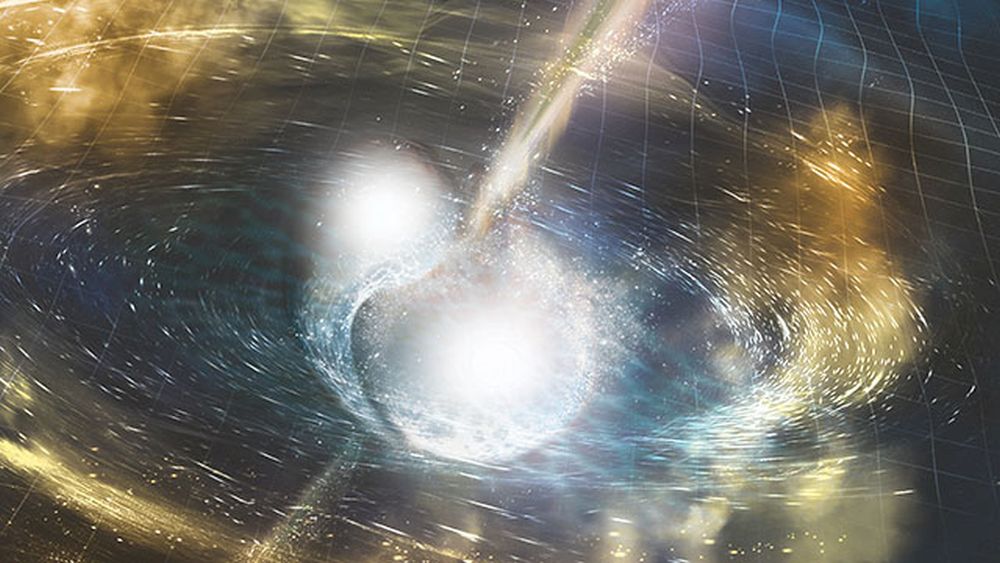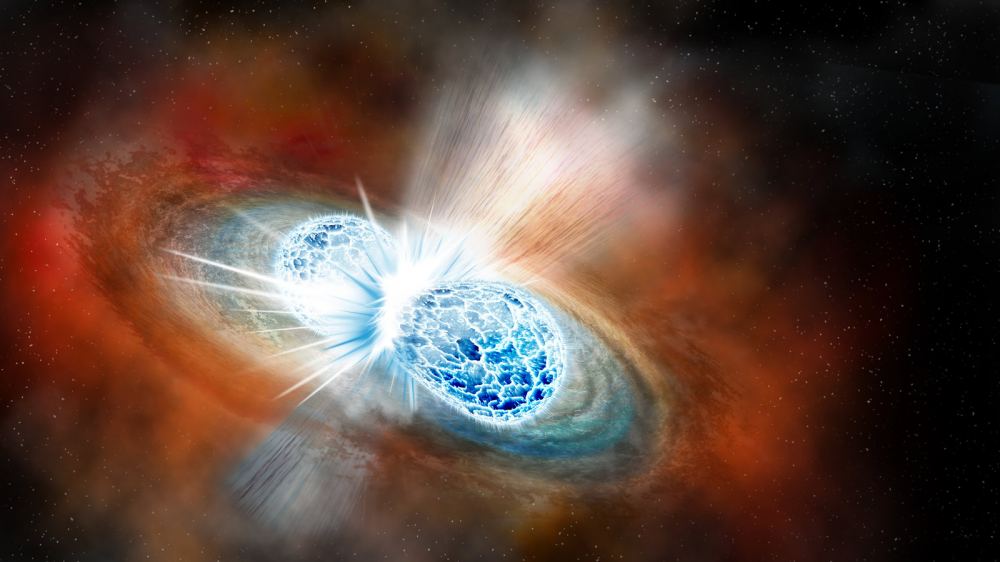Neutron stars are the remnants of massive stars that explode as supernovae at the end of their fusion lives. They’re super-dense cores where all of the protons and electrons are crushed into neutrons by the overpowering gravity of the dead star. They’re the smallest and densest stellar objects, except for black holes, and possibly other arcane, hypothetical objects like quark stars.
When two neutron stars merge, we can detect the resulting gravitational waves. But some aspects of these mergers are poorly-understood. One question surrounds short-lived gamma-ray bursts from these mergers. Previous studies have shown that these bursts may come from the decay of heavy elements produced in a neutron star merger.
A new study strengthens our understanding of these complex mergers and introduces a model that explains the gamma rays.
Continue reading “New Simulation Shows Exactly What’s Happening as Neutron Stars Merge”


